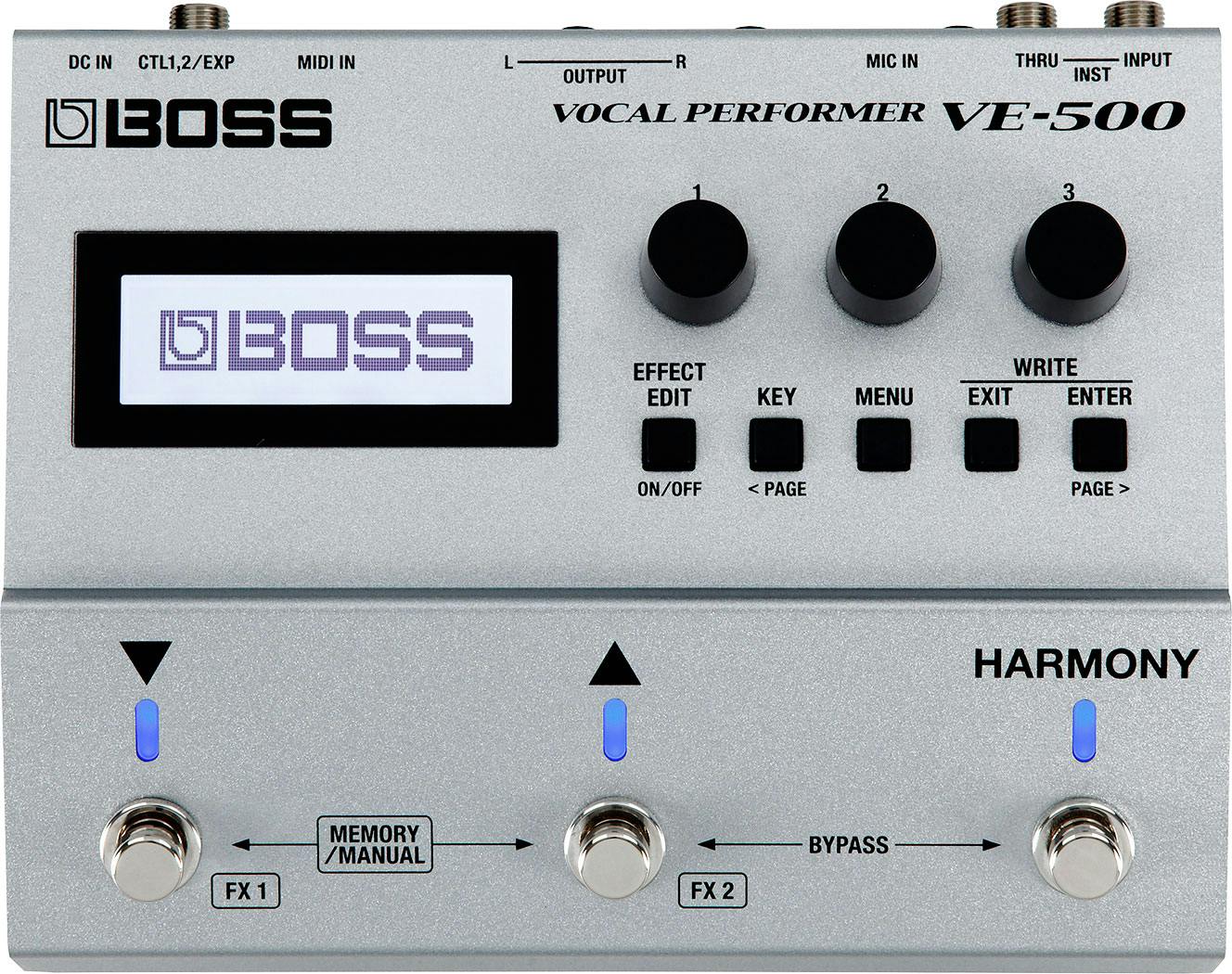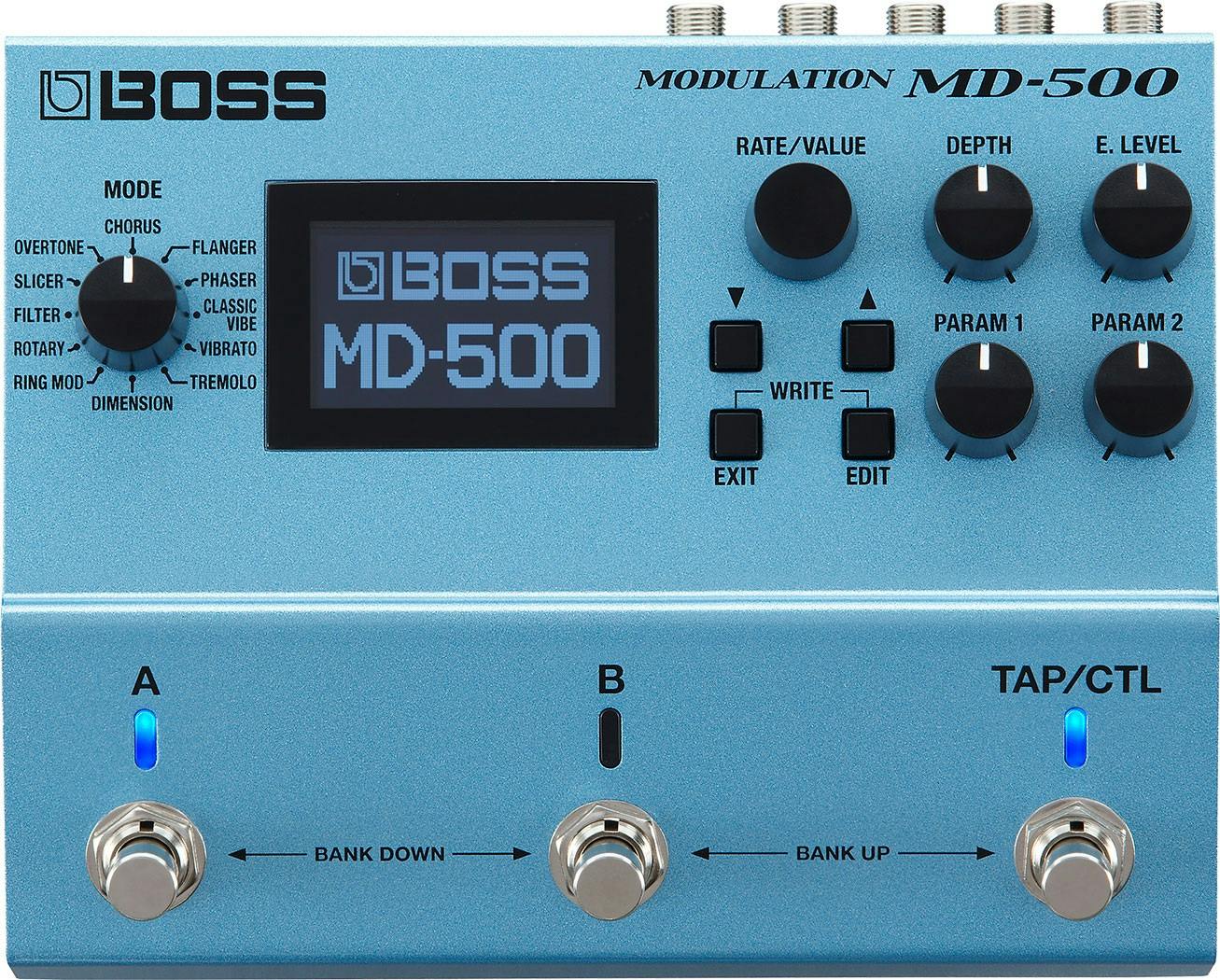Description
The Boss VE-500 Vocal Performer Pedal is currently retailing at £385 and it is in stock. Available to be delivered to you by post direct (some charge may apply).The team at Just Pedals think that Boss nailed it with the Boss VE-500 Vocal Performer Pedal.
If you're both a singer and guitarist, you might naturally put more emphasis on the guitar pedals. But with the Boss VE-500 Vocal Performer, that's all about to change.
Open up your possibilities with tons of vocal effects all from a stompbox easily inserted into your pedalboard. It also offers direct access from your microphone to the mixing desk.
Vocal tools
It's not an exaggeration to say there are thousands of options and combinations available through the VE-500. Run up to nine effects at once. Including world-class reverb, delay, compression, distortion, EQ and loads more. Find them easily with the three footswitches that display your options on a bright, clear digital screen perfect for stage use.
The VE-500 has a deep and expansive editing system so you can add subtle effects or completely wild modulations like slicers, ring mods, flangers and tremolo. Polish off your vocals at the same time using the dedicated pitch correction guided by guitar or MIDI. Again, you can push this feature beyond the norm to perform extremely hard pitch correction and electronic tones heard on modern pop and R&B songs, or create robot voice sounds.
There's also a powerful in-built vocoder so you can pull of all those 80's sounding 'talking lead guitar' solos, without having to use a talk box and mouth tube. The VE-500 also performs backing vocal harmonies when you're other bandmates are tone deaf! It recognises the guitar chords and key you play in to produce two and three-part harmonies.
Total control
Save your settings using up to a huge 99 preset slots. You'll always be able to recall specific settings for song parts using the detailed editor/librarian software or MIDI compatibility. Expand your control by adding external footswitches or expression pedals.
Assign the three dials found on the VE-500 to preferred parameters, so you can change them on the fly. And with the VE-500’s stereo XLR outputs, you’re able to send your processed vocal sounds directly to a PA mixer, stage monitor, or recording device.
Specifications
- Advanced vocal multi-effects stompbox for singing guitarists
- Automatic vocal harmony/pitch correction powered by newly enhanced BOSS algorithms for natural sound with smooth tracking
- Class-leading sound quality and high-powered BOSS DSP engine for processing vocals with up to nine effects at once
- Extensive selection of effects specially tuned for vocals; Enhance section for shaping core tone, plus reverb, delay, modulation, distortion, EQ, filter, and many other types for further processing
- Versatile and creative vocoder effect for generating electronic voice and talk box sounds based on guitar input
- Flexible effect routing options for processing live and harmonized











































